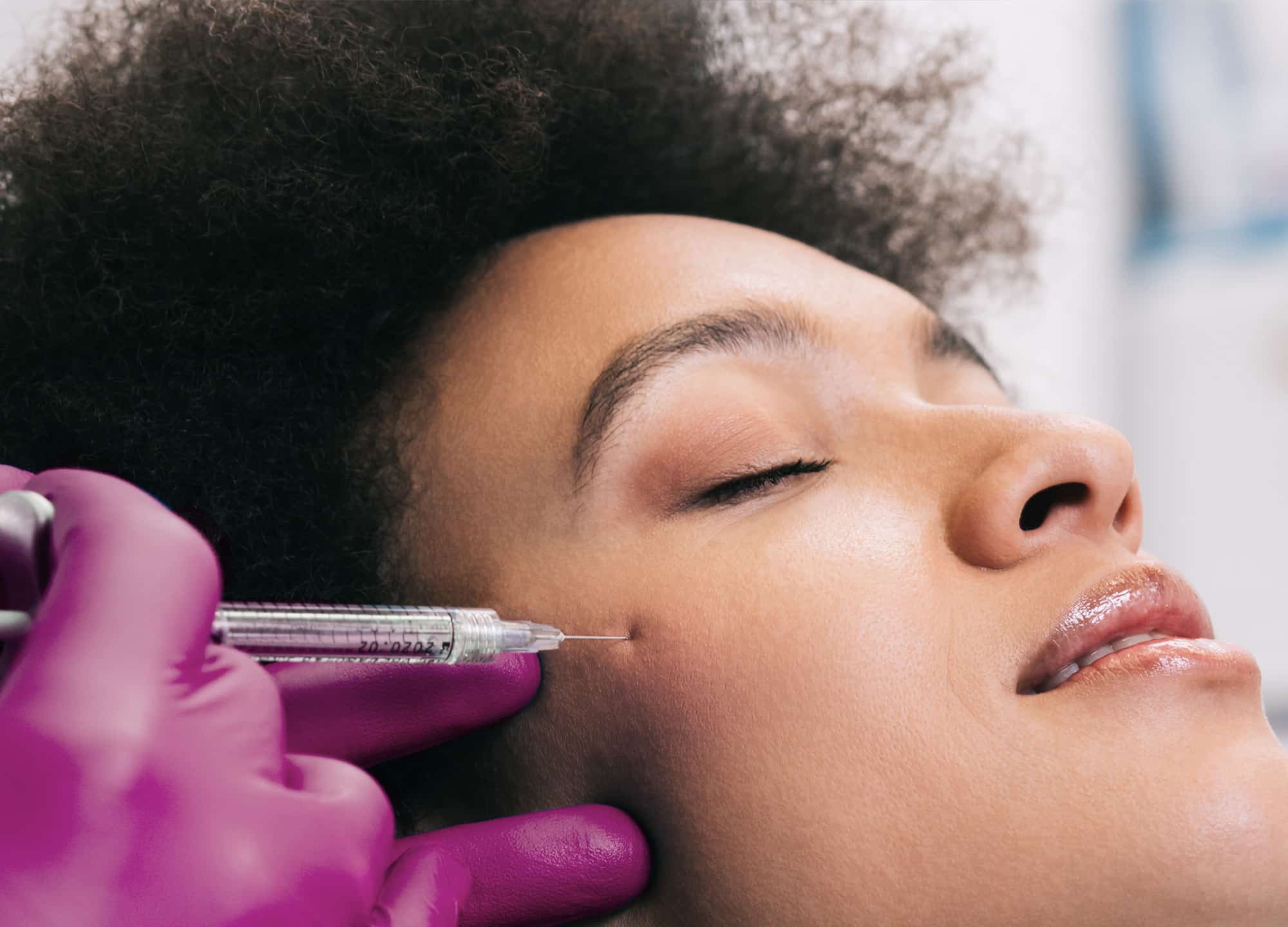Although dermal fillers have been around since the 1970s, when bovine collagen injections were first introduced, the advent of hyaluronic acid fillers in the early 2000s really changed the game. Over the past two decades, as research has advanced and more products and uses have been approved by the U.S. Food and Drug Administration (FDA), patients have had a number of fillers to choose from, including the popular Restylane and Juvéderm lines.
Now, with the launch of a new collection of hyaluronic acid (HA) fillers from Revance, yet another appealing option has been added to the mix. The company’s resilient hyaluronic acid (RHA) fillers are available in four different versions, each meant for a different depth of injection and specific area of the face—although only RHA 2, RHA 3, and RHA 4 are available currently, while RHA 1 undergoes FDA approval. RHA fillers are designed to treat dynamic wrinkles and creases while adapting to your facial movements, for a natural-looking result. Here’s what you need to know before trying RHA Collection of dermal fillers.
What makes the new RHA fillers different from others on the market?
Every existing HA filler on the market features much shorter hyaluronic acid chains than those already present in our skin. In order to create lasting, stable filler that resembles natural HA, during the gentle manufacturing process, the HA chains are pressed through a grid and crosslinked with other agents, like the chemical BDDE, or cooked at high temperatures (which breaks down the integrity of the chain) before being crosslinked. “The idea for RHA was to create the chains by cooking the hyaluronic acid at a lower temperature—and because it was cooked at a lower temperature, it was able to maintain the integrity of the chains, so they’re much longer and much more comparable to native chains,” says Dr. Ava Shamban, a board-certified dermatologist in Beverly Hills, California, who served as the investigator in the first two of RHA’s U.S. clinical trials.
“The RHA fillers have longer HA chains that can form a network of reversible, mobile bonds and require less BDDE crosslinking for stabilization,” says Dr. Hema Sundaram, a board-certified dermatologist in Rockville, Maryland, and Fairfax, Virginia, who served as a principal investigator for the FDA studies and a clinical investigator and consultant for Teoxane Laboratories in Europe (the manufacturer of RHA fillers). The difference between RHA II, III, and IV is the amount of crosslinking in each, with IV having the most (making it ideal for injection into the deep dermis to superficial subcutaneous tissue) and II having the least.
“It turns out that the processing really defines the functionality of the HA,” says Dr. Shamban. “So as you would expect, if the HA is more similar to what we already have in our bodies, it’s going to look and feel more natural and it’s going to move with our native HA.” Unlike fillers that tend to be stiffer and stay in one place, RHA is said to actually move with the face, so when you smile and then relax your face, talk, or emote, it appears more natural. It’s important to note, however, that the needle, cannula, or other injection tool, depending on the size, can often slice the hyaluronic chains in half before they even meet the face, so it’s unclear whether the chains are actually maintaining their length through the whole process.
Related: 7 New Fillers and Neurotoxins Launching in 2020 or 2021
Where can RHA fillers be used?
While each of the collection’s four fillers has different indications and treatments, they are all approved “for the correction of dynamic facial wrinkles and folds that are moderate to severe, such as nasolabial folds.” Off-label though, Dr. Shamban has used the fillers in the midface and under-eye regions as well as in the so-called accordion lines and radial cheek lines. “I’ve used it everywhere, and I’ve just been really impressed with what a beautifully natural contour it makes,” she says. The dermatologist also feels comfortable layering the fillers, so if a patient wants something deeper and then also more topical, for superficial lines and wrinkles, she has confidence that the result will provide a natural look. “In countries where RHA I is already approved, it’s considered by many to be the hero product of the RHA range,” says Dr. Sundaram. “Injectors find it of value for the tear troughs and for superficial injection into fine lines.”
Most notably, the RHA products do not appear to have the undesirable swelling side effect that comes with many other fillers. “This appears to integrate into the tissue in a superior fashion—and more rapidly,” says Dr. Shamban.
How do RHA’s staying power and price point compare to those of its competitors?
The effects of filler treatment can last anywhere from three months to two years, depending on the product and treatment area, but the RHA collection is approved to last up to 15 months, three months less than Juvéderm Vollure XC’s 18-month approval.
RHA’s introductory pricing is fairly similar to that of other fillers, but because Revance is marketing it as a “designer brand,” it might end up carrying a premium price tag. Dr. Shamban thinks that even with a higher price, it’s a worthwhile investment, so long as you go to a provider who knows what they’re doing and can customize a treatment plan that matches your goals.











